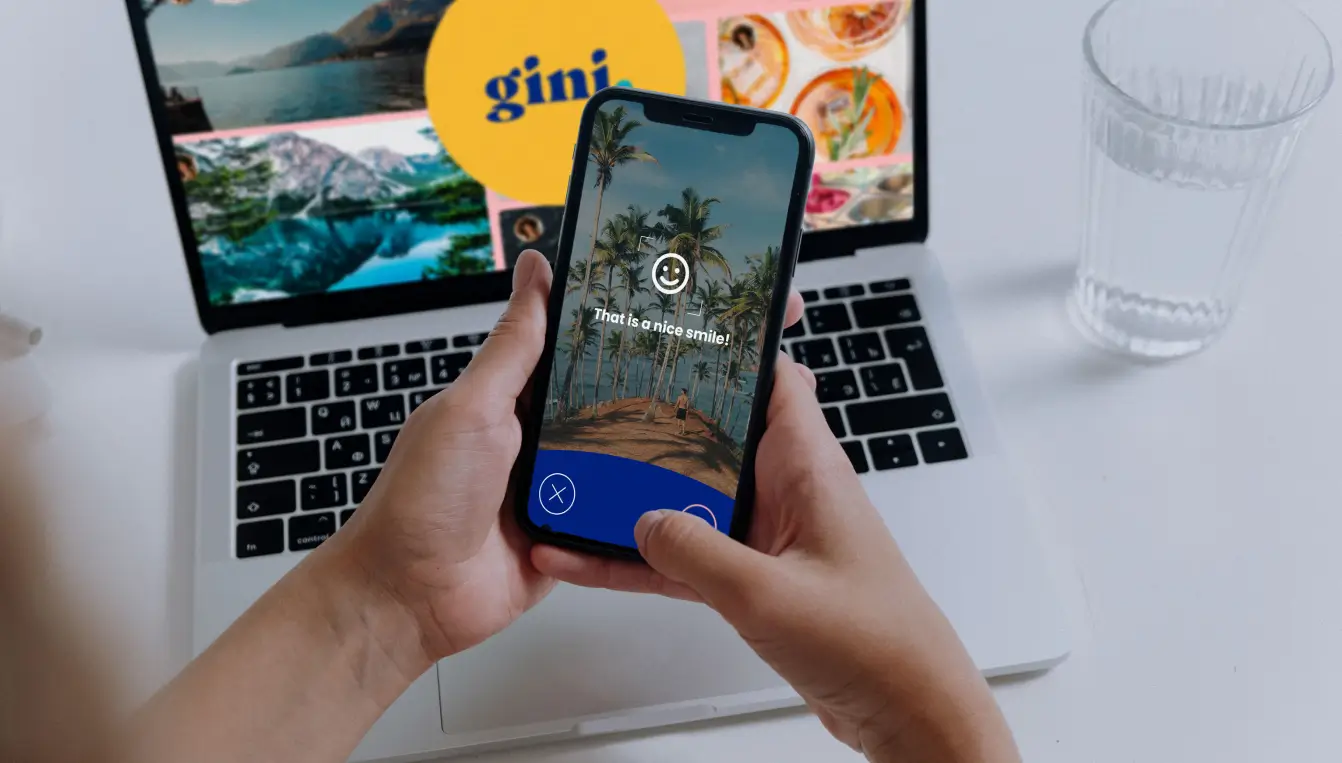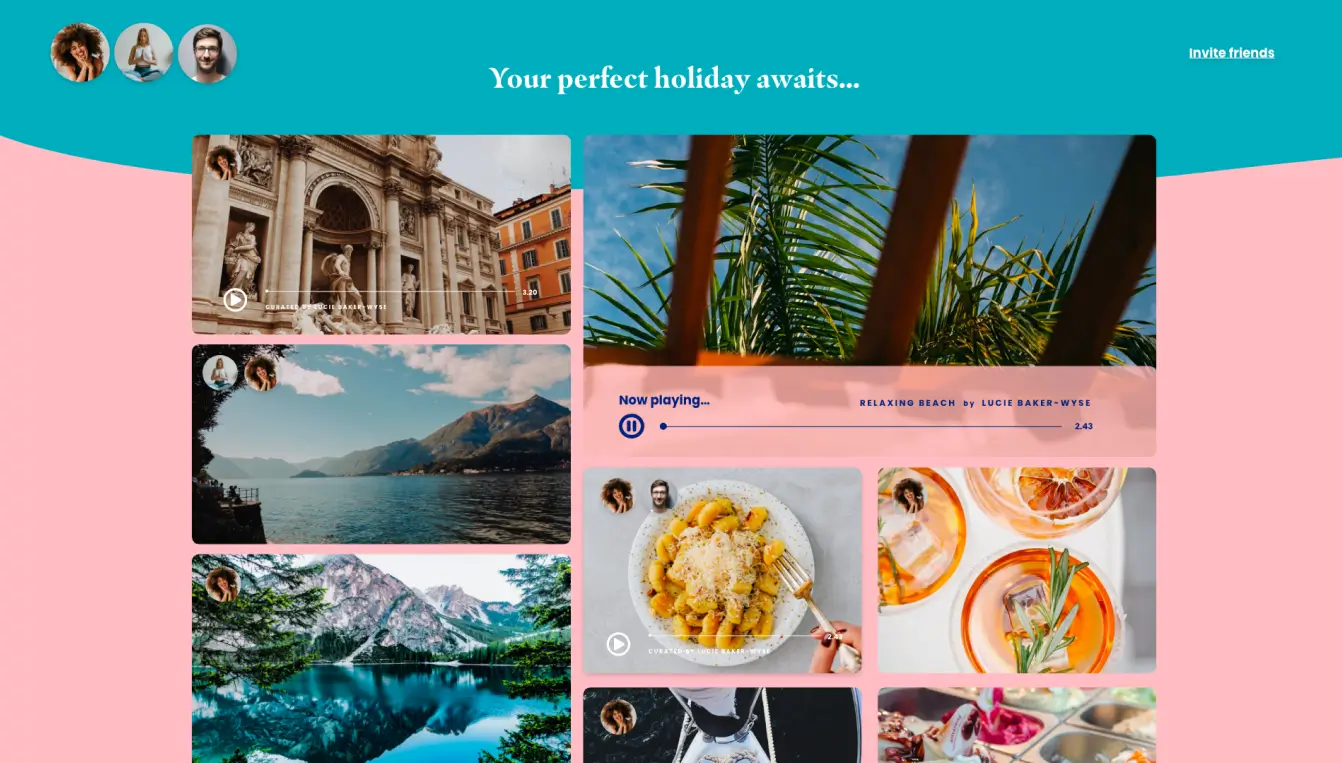
The holiday search experience isn't fit for purpose. We go on holiday to change how we feel, but we book our getaways based on destination names, endless choice and how other people experience places. It's often confusing, frustrating and tedious.
We asked ourselves… how else could holiday searches happen? And how could technology be used to reimagine this experience?

A vision for a tech-infused ecosystem, but tech is not the star here. The experience is. One where you create a collection of getaway moments, with sound, tastes, views... Beyond destination and categories. One where the most frustrating parts of the booking process are replaced by sensory-led exploration, to unlock holiday decisions that are true to you. In this vision, technology redefines the dreaming and planning phases of travel.

You get to create soundscapes to match your perfect holiday atmosphere. Gini detects pure moments of joy with face recognition technology. And learns what tickles your tastebuds as you swipe left and right. All to help surface the ideal holiday you never knew you wanted. Without ever clicking on a category again.